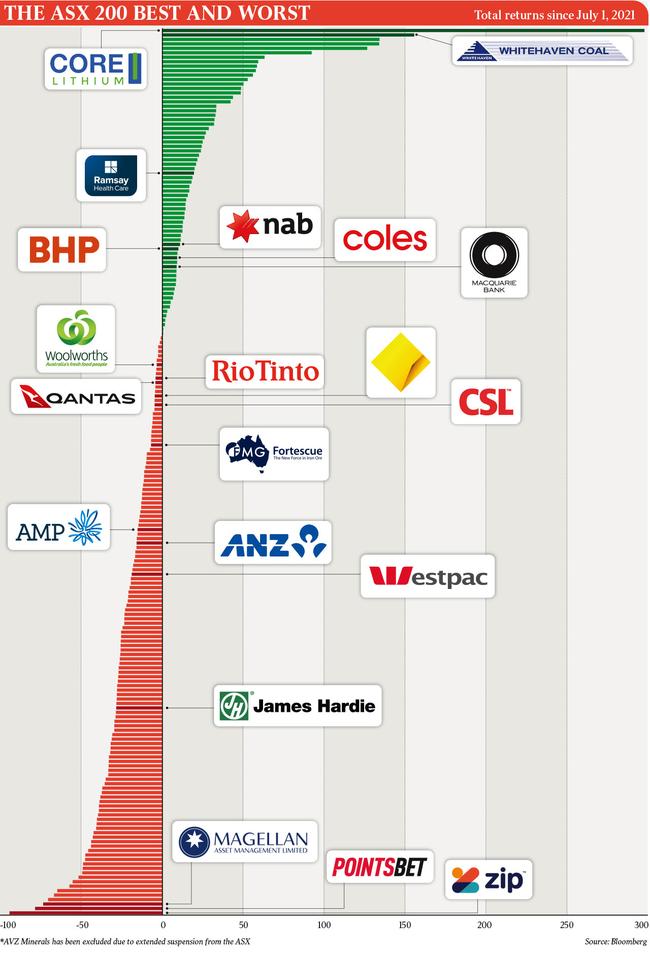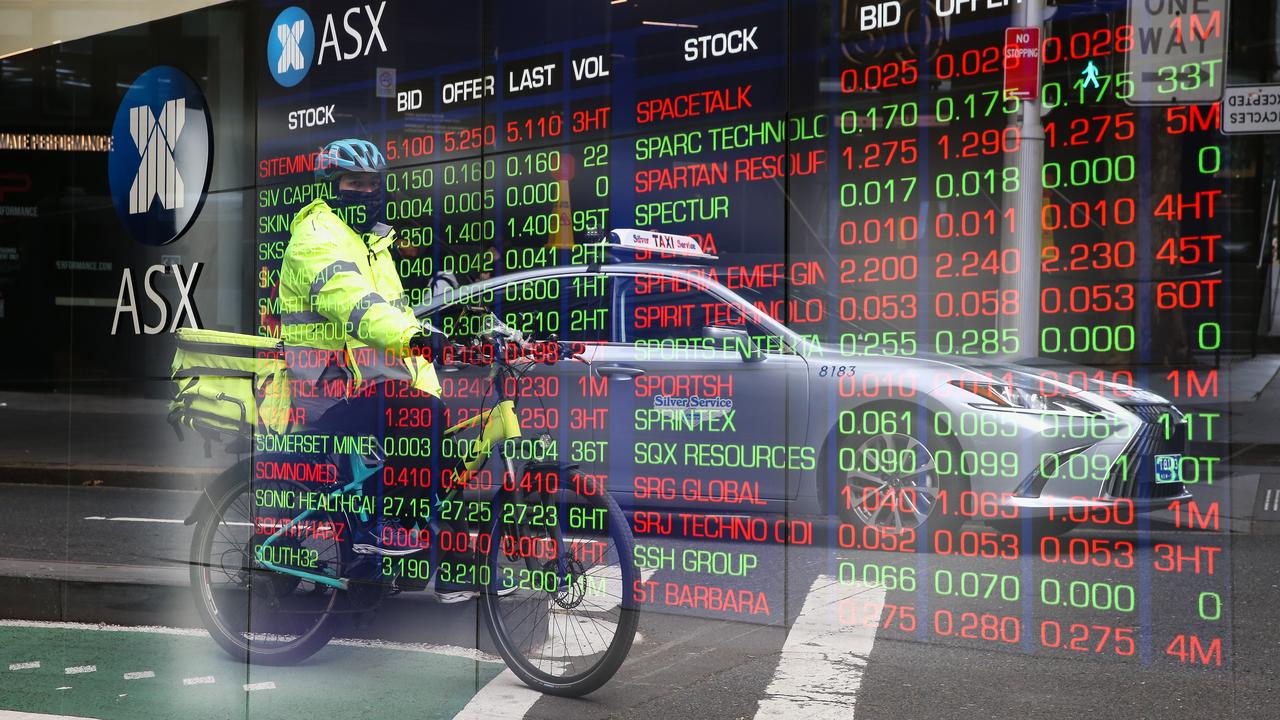Coal booms but tech stocks suffer meltdown as ASX 200 loses 10pc for the year
A boom for resources and a collapse in the price of once-hot technology stocks has left the ASX 200 down 10.2 per cent over the financial year.
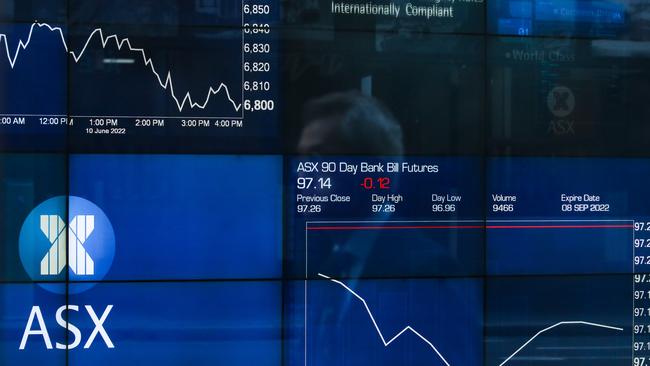
A boom for resources – especially investors in the long-spurned coal sector – and a collapse in the price of once-hot technology stocks has left the ASX 200 down 10.2 per cent over the financial year.
And there appears there will be little respite in coming months, as inflation runs hot in major economies and central banks are poised to continue lifting official rates.
Its not just local markets that have suffered. The last six months has seen “some of the worst year-to-date returns on record for the S&P 500 as inflation fears, rising rates and geopolitical unrest has dampened the mood of equity investors”, Macquarie told clients.
Returns since December 31 for the S&P 500 were on track to be the fifth worst since 1929, it said.
Airlie Funds portfolio manager Matt Williams said the market was “much quicker to price things in”.
“I think we will see rallies in consumer discretionary, in tech, over time, but the fact is that the [US Federal Reserve] and other central banks including the Reserve Bank are telling us they’re on a path and it’s an aggressive path, so you can’t ignore that,” Mr Williams said.
“We’re at the beginning of the cycle turning, so I think you’ll see some consumer discretionary companies report some really strong second-half profits. That’s why you might see some good rallies, short-covering rallies or just relief rallies, but at the same time you can’t cannot ignore the medium and longer-term implications of the central bank actions.”
In Australia, the ASX was lifted during the year to June 30 by utilities and energy, although the real winners were lithium stocks.
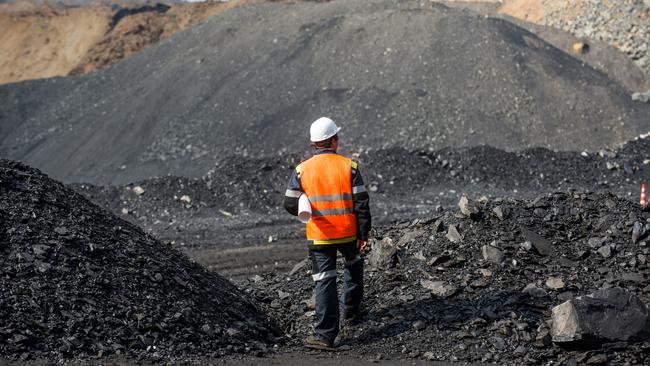
Core Lithium posted the highest total returns: 280 per cent, according to Bloomberg. Lake Resources, another emerging lithium producer, saw returns of some 155 per cent – although it abruptly lost its chief executive Steve Promnitz and has faced an unrelenting slide in its stock price. Lake shares fell 41.9 per cent this month alone.
Whitehaven, New Hope and Coronado Global – all coal miners – rounded out the top five returns.
“For the first time I think I’ve ever seen, you have a 20 per cent premium for thermal coal over metallurgical coal, which just beggars belief,” said Glyn Lawcock, head of resources research at Barrenjoey Capital Partners.
“Is that sustainable? I suspect not. But it’s also a very, very bizarre world we live in at the moment.”
However, ASX-listed technology companies have fared poorly in the last 12 months. Zip Co, the one-time buy now, pay later market darling, has seen returns of -94 per cent, Bloomberg data shows.
Online-only bookie Pointsbet and payments management system provider EML Payments are also among the worst performers on the ASX 200 this year.
Still, EML chief executive Tom Cregan told The Australian that EML had been affected by the same forces that had cut valuations of peers including PayPal, Paysafe, Nuvei and several others.
“Not many companies can outrun local or global sentiment, but how long it takes sector valuations to recover in payments technology is unknown,” Mr Cregan said.
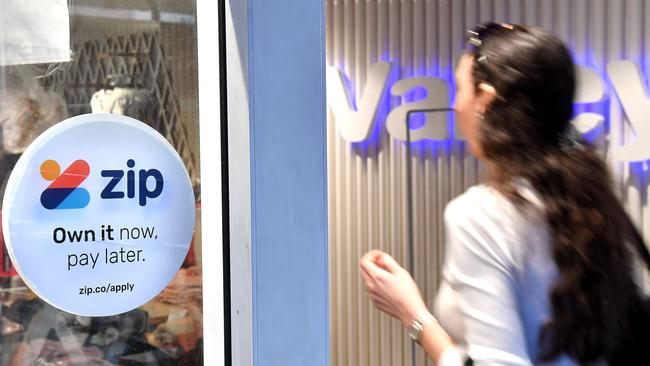
Bradley King, a director at investment manager Armytage Private, said regulators had put EML “through the ringer”.
“EML does now have a bit of a credibility issue with the market and possibly needs to address that,” Mr King said. “But if you look at the way they make money, they make a lot on interest payments, or interest on debit cards, gift cards, and also just payments as well, where there’s a higher interest rate. So in a rising interest rate environment, they should do really well from taking those interest rates that they’ve got through cash on call from the wagering and the gift card businesses.”
There has also been plenty of capital markets activity in the past year. Some deals remain pending – notably the proposed $20bn acquisition of private hospital provider Ramsay Health Care by US private equity firm KKR.
Others, including Blackstone’s $8.9bn purchase of Crown Resorts and the demerger of the $10bn Lottery Corporation out from Tabcorp, have been finalised in the past few months.
“Demergers almost always result in better outcomes for shareholders over time, and both Tabcorp and the Lotteries Corporation have very strong attributes,” said Airlie Funds’ Mr Williams.
National Australia Bank was the best performing of the big for on the ASX across the year, with a return of 12 per cent.
“The growth potential in earnings outlook is a bit more challenged in a slowing economy and slowing housing market environment, which is what we’re expecting into the back end of this year in 2023,” CommSec economist Ryan Felsman said of the major banks.
“At the same time, the banks could benefit from strong dividend yields and franking, so that is a supportive element for the sector itself. The issue at the moment is around the fact that when we see rising interest rates, there’s an expectation that net interest margins will lift and that will benefit the banks and their share prices.
“A the same time, rising interest rates have a big impact on housing activity, and we’re starting to see slowing home prices and slowing housing activity.
“A combination of the slowing housing activity along with some angst about an economic slowdown in Australia on the back of higher inflation, and also rising interest rates, is probably leading to that [share price] weakness.”
More Coverage
